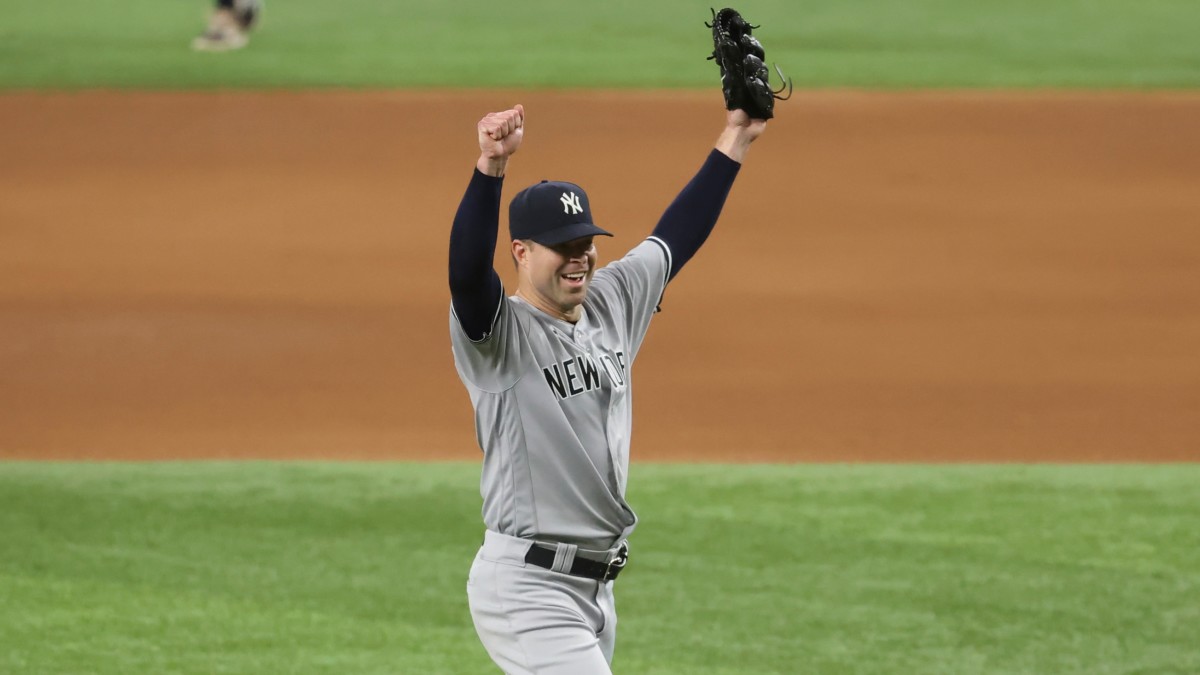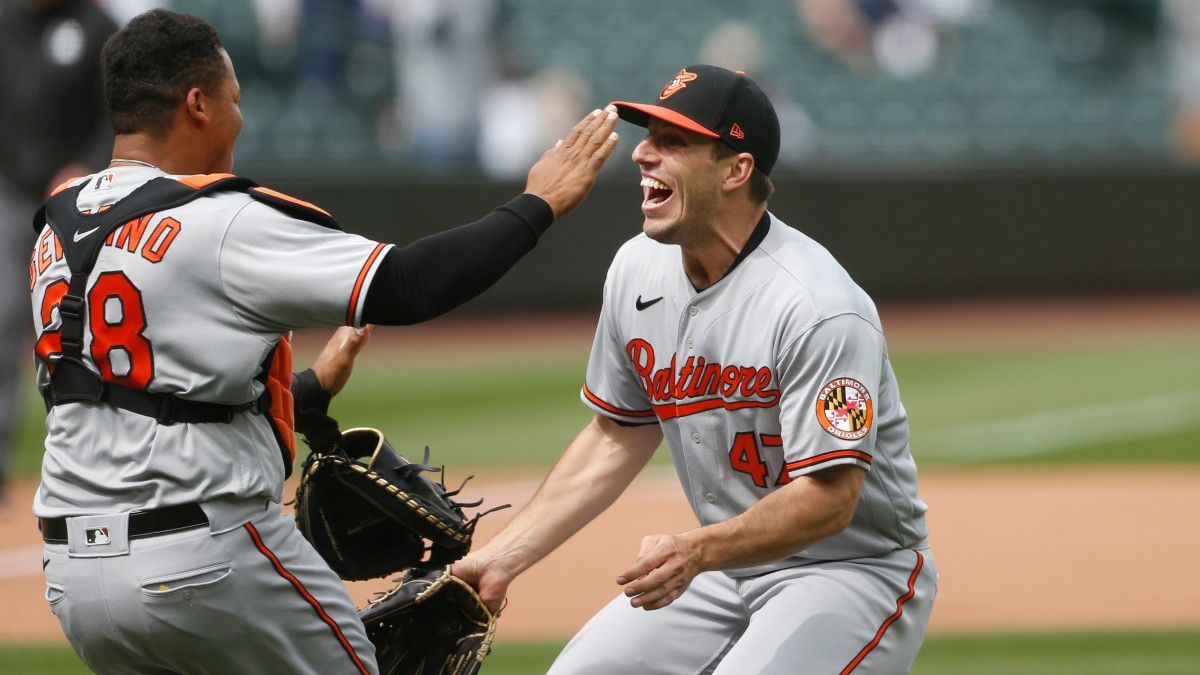Roundtable: Have No-Hitters Lost Their Luster?
With two more no-hitters this week, it's time to have a discussion about the increase of one of baseball's signature achievements.
It took just 42 days for baseball to reach six no-hitters this season; never before has baseball reached that mark so soon. In 1917, five no-hitters were thrown in 23 days. We are one no-hitter shy of the modern record (which has happened in multiple seasons) and two away from the all-time single-season record set in 1884.
This trend has prompted questions about the novelty of no-hitters. Clayton Kershaw, the best pitcher of his generation, said this week that so many no-nos is bad for baseball. Is it possible to have too many no-hitters? Is throwing a no-hitter still an accomplishment if it happens this frequently? Sports Illustrated's baseball writers weighed in.

Tom Verducci
When it comes to no-hitters, do the math.
The major league batting average is at an all-time low (.234). Teams average only 7.8 hits per game; only 1908, smack in the Deadball Era, saw fewer hits per game (7.75). With nine strikeouts among the 33 at bats per game, a team needs to defend only 24 balls in play.
And that’s where shifts come in. Shifts take 12 points off batting average on balls in play.
Now you begin to understand why this no-hit trend is not a fluke. We are seeing one no-hitter every 124 games, or about one every nine or 10 days. At this rate we may see 19 no-nos this year.
What if the rate slows down (though we haven’t even seen combined no-hitters this year, which you know are coming) and we get 10, an all-time record? It’s not too many. Did you catch Spencer Turnbull of Detroit pitching the ninth inning against the Mariners on Tuesday? If you did, it was pure drama and excitement, especially as Turnbull, a guy who led the majors in losses just two years ago, dug deep to find more velocity than he had all night to finish it off. The moment was no less exciting because four no-hitters already had been thrown. Each one is worthy of phone alerts and edge-of-seat drama.
So let the no-hitters keep coming. You can look at it this way: Baseball really needs to change to get more balls put in play. If we’re even talking about the idea of “too many no-hitters” and the worst batting average of all time, therein lies the motivation for the sport to do something. Nothing like rock bottom for incentive.
.@spencerturnbull has thrown the first @tigers no-hitter since Justin Verlander in 2011. 🔥 pic.twitter.com/yLkMwbpAQ0
— MLB (@MLB) May 19, 2021
Stephanie Apstein
I think it's possible, but I don't think we're there yet. (Although I do think it's worth mentioning that Matt sent this roundtable question before Corey Kluber made it six.) If we spend the entire season getting them at this pace, that will be weird, but even then, it could just be a fluke: the Year of the No-Hitter. I would be more concerned if we went on like this for years, and I don't think the league will let it get to that point. In the meantime, yes, it's nuts and kind of embarrassing for the sport, but if you try to focus on the joy and pride these guys feel at achieving a dream, I think it's hard to get tired of them.
Emma Baccellieri
I don't mind the number of no-hitters. (Though I do have to admit it's become difficult to summon the usual level of excitement for them at this point: Apologies to Corey Kluber, but in terms of personal appreciation, I think I maxed out on Spencer Turnbull.) But I'm concerned about some of the factors behind the recent increase. I don't think it's great for the game to have the ball in play so infrequently—league batting average remains at an all-time low with the fewest hits per game since 1908. Some of the ideas that sounded drastic just a few years ago, like moving the mound back, now seem potentially necessary. The no-hitters themselves? Bring 'em on. But the conditions that are making it so easy for them to happen? I think we've hit a point that calls for change.
Will Laws
No-hitters themselves are still fun and a noteworthy accomplishment worth celebrating. But they're a symptom of the larger issues baseball is grappling with: less contact, fewer hits on balls in play and less fun. The current league batting average is .236. Only twice before have MLB hitters have hit below .240 for a full season. The first, 1908, was peak dead-ball era. The second, 1968, immediately preceded the lowering of the mound. It's probably time for another pro-offense action from the commissioner's offense. My preferred route would be banning the shift, a position I wouldn't have taken a few years ago because it was novel to see smarter teams gain an edge. But now everyone is doing it, and it's had an adverse effect on the game. Let's keep the infielders on the dirt, with two on each side of second base. We'll still probably get more no-hitters than we're used to because of the collective increase in nastiness of pitchers' stuff, but it'll at least tilt the needle back in favor of the hitters a little bit.
Matt Martell
Much of the conversation around the Year of the No-Hitter has focused on offensive incompetence. And while that's most certainly true, as the others have outlined above, let's look at the pitching side of things. Even the best starters today are not expected to pitch more than seven innings. Blake Snell, a former Cy Young winner and one of the top arms in the National League, has not pitched more than six innings since May 24, 2019. Because going deep in games is no longer a priority for most clubs, most pitchers aren't developed to throw the nine innings necessary for completing no-hitters. (And yes, no-hitters are nine innings; sorry MadBum.)
With no-hitters today, the tension is not whether batters will finally figure out a pitcher who's silenced them for their first two or three times up, but whether the pitcher can muster the physical and mental strength to finish the game. The achievement then is the endurance, at a time when bullpen arms are plentiful and load management is in vogue. Surely, there are problems with offense, which is a major concern that MLB must address. But these issues exist even when pitchers don't complete their no-hit bids.
Offense is going to be down this year regardless of how many no-hitters are thrown. Let's at least have some excitement with it.

Nick Selbe
It's hard to say exactly when no-hitters jumped the shark, but we've definitely passed the breaking point. I've detailed some ideas as to why we might be entering a golden age for no-hitters, but I have to admit that six of them before the end of May is not something I expected. Major League Baseball has a real problem on its hands, and too many no-hitters is just a symptom. The environment for offense has been suppressed, and when teams actually do score, they do so while being far too reliant on home runs. A simple solution appears to be some sort of restriction (or even an outright ban) of the infield shift—perhaps by forcing two infielders on each side of second base or requiring all four infielders to remain on the dirt. Whatever the remedy, the league should already be kicking the tires on ways to promote more excitement to the game, or we'll soon start seeing subdued, golf clap-like reactions when pitchers seal the deal on no-hitters.
Michael Shapiro
There are certainly some diminishing returns at this point as we await the seventh no-hitter of the 2021 season. This is still an accomplishment worth celebrating, but as the wave of no-no's continues, each one seems to be more an indictment of listless offenses than anything. Texas, Cleveland and Seattle each have been no-hit twice. Those teams rank 10th, 13th and 15th in the American League in OPS. This is truly the year of the pitcher as the no-hitters arrive weekly and strikeouts rise at an alarming rate. And while Corey Kluber and Spencer Turnbull deserve to be lauded for their efforts, the recent no-hitters signal a troubling trend for baseball.
More MLB Coverage:
• Baccellieri: MLB's Rise in No-Hitters Mirrors 'Sunless Spring' of 1917
• Selbe: Corey Kluber Reclaims His Ace Status
• Verducci: What's Behind Baseball's Hit-by-Pitch Epidemic?
• Rosenberg: Want to Fix the Unwritten-Rules Mess? Let Teams Give Up
